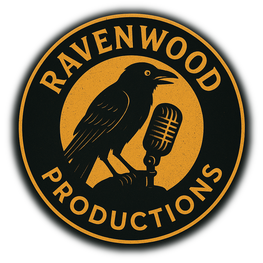Whispers from the Void: Diving Deep with the REM Pod

Hey fellow shadow seekers and spectral sleuths! Juniper Ravenwood back with you here on the Shadow Frequency, and today we're diving into a piece of tech that has become a staple in many paranormal investigations: the REM pod.
For those newer to the field, or perhaps just curious about those antenna-laden devices you see ghost hunters waving around, the REM pod (short for Radio Electromagnetic Field Pod) is a fascinating tool designed to detect disturbances in the electromagnetic field surrounding it. Unlike traditional EMF meters that require direct contact with a suspected energy source, the REM pod creates its own small electromagnetic field. When something interferes with this field – be it a physical object or, as we hope, something a little more…ethereal – it triggers an audible and often visual alert.
Now, let's be real. The REM pod has its fair share of critics. Skeptics often point to environmental factors like static electricity, radio waves, or even the investigator's own movements as potential triggers. And they're not entirely wrong! A gust of wind or a nearby walkie-talkie can certainly set one off.
However, for many of us in the paranormal community, the REM pod offers a unique avenue for potential communication. Think about it: if a spirit or entity is manipulating the energy around it, even subtly, the REM pod could be our electronic canary in the coal mine. It can alert us to a presence even before our other senses pick up on anything.
So, how do we use these intriguing gadgets effectively? Here are a few thoughts from my own experiences:
- Controlled Environments are Key: Minimizing potential false positives is crucial. Before deploying a REM pod, take the time to assess the environment. Are there obvious sources of EMF interference nearby? Can you control foot traffic and other movements in the immediate vicinity?
- Ask Intelligent Questions: Don't just ask "Are you here?" Try more specific inquiries that might elicit a pattern in the REM pod's responses. For example, "If your name starts with a 'B,' can you trigger the light once?" or "If you don't like this room, can you cause the alarm to sound twice?"
- Look for Correlations: A single trigger on a REM pod might be nothing. But if you have multiple triggers coinciding with other phenomena – a temperature drop, a feeling of unease, or even a verbal response captured on audio – that's when things get interesting.
- Placement Matters: Experiment with placing REM pods in different locations within a supposedly haunted area. Consider doorways, areas with reported activity, or even near objects believed to hold residual energy.
- Combine with Other Tools: The REM pod shouldn't be your only piece of evidence. Use it in conjunction with EMF meters, audio recorders, video cameras, and your own senses to build a more comprehensive picture.
I've had some truly fascinating experiences using REM pods. On one investigation in an old theater, we placed a pod on the stage. We asked if anyone who had performed there still lingered. To our surprise, the pod's lights flickered in a rhythmic pattern after we asked about a specific type of dance. Was it a coincidence? Maybe. But it certainly gave us pause and fueled our investigation further.
The REM pod, like any piece of paranormal investigation equipment, isn't a magic bullet. It requires careful use, critical thinking, and a healthy dose of skepticism. However, when used thoughtfully and in conjunction with other methods, it can be a valuable tool in our quest to understand the mysteries that lie just beyond our everyday perception.
What are your experiences with REM pods? Have you captured any compelling evidence? Share your stories in the comments below – I'd love to hear them!
Until next time, keep your senses sharp and your frequencies open.
Stay spooky,
Juniper Ravenwood The Shadow Frequency






















